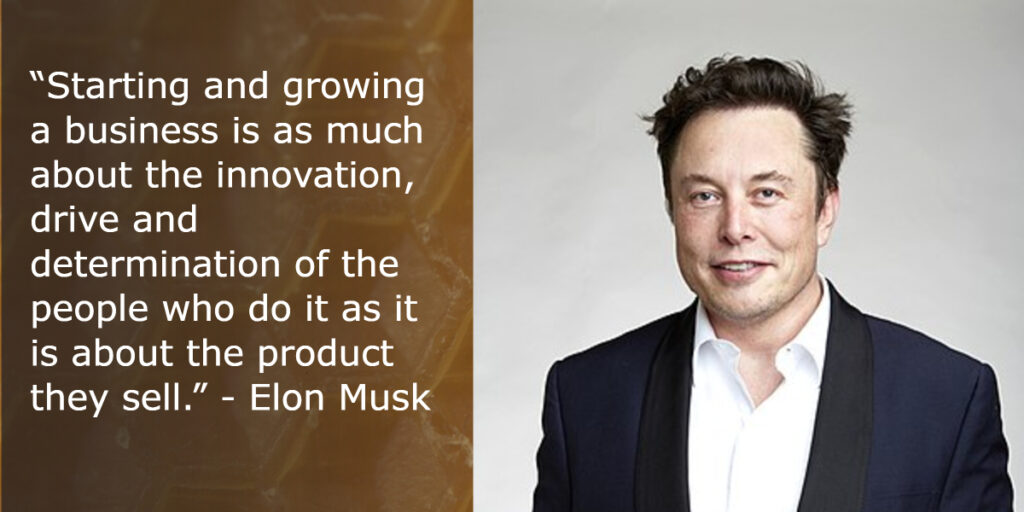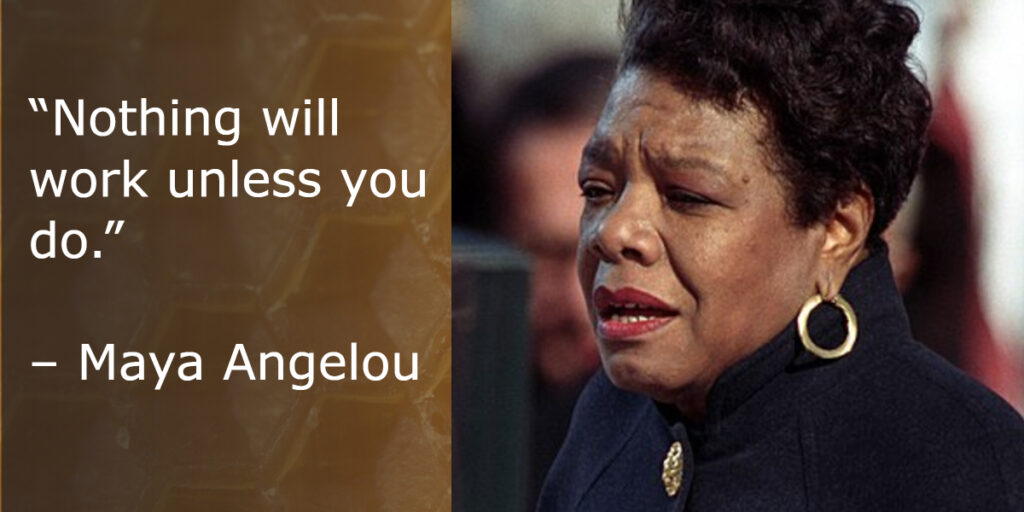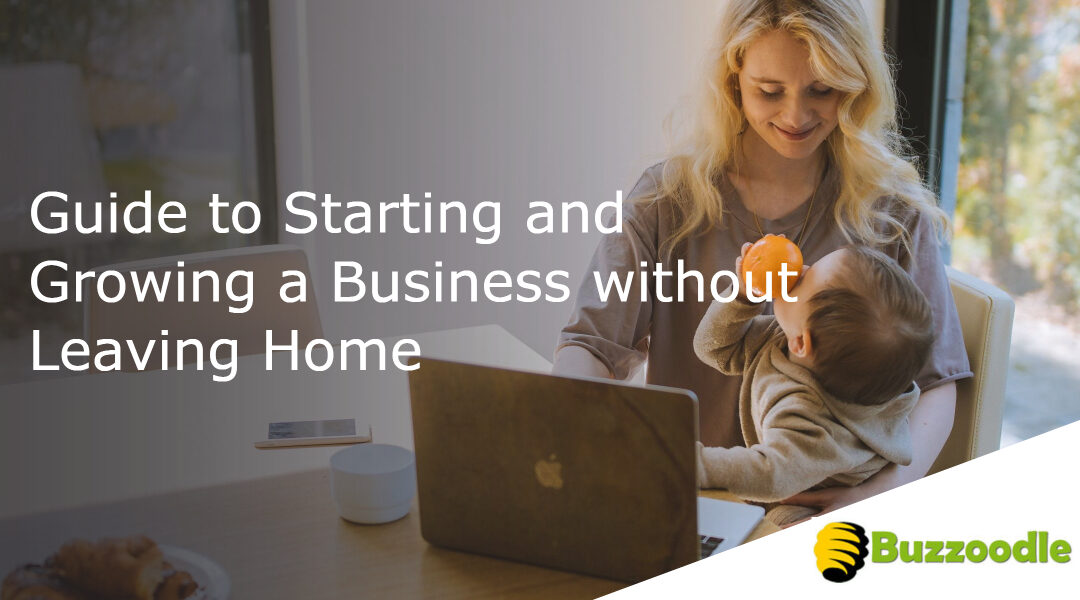In 2020, due to Corona Virus (COVID-19) there are a lot of people with low or no income, as well as more free time stuck at home. I decided to write a definitive guide to launching a business from your computer. This will not replace your income quickly, but if you put in some work now, in the future you can have a full-time business, or maybe just some side income which is always helpful, and especially helpful when unexpected things happen.
This is not a multi-level marketing thing or a system you buy. This is real life building an audience of people who want to hear from you and eventually buy something from you. If you decide to use any of the tools we link to, we might get a commission, but you do not need to use our links. The advice is the same.
The key to success is to keep at growing your audience for a while. Developing credibility on the web with people and companies like Google take time. If you dabble for a few days and give up because you are not making money, it is best not to start in the first place.
There are a few things to think about before you get started. You need to build an audience and have things to sell eventually. If you can do those two things well, you will be successful.
Step One – Pick Your Niche Topic

You need to pick your target audience. Traditionally, you will hear a lot of people say to go very narrow. However, I know sometimes you can also go too narrow and not be able to build an audience in any reasonable timeframe. There also needs to also be realistic things you can sell them in the future, although you will not try to do that right away.
So, think about who you like to hang out with and talk to. What kinds of people frequently ask you questions? Who can you help and who would pay you for something? It really is that simple. But you have to think about it from their point of view, not yours. You might want them to pay $50 a month to be in a private online group, but in reality, they might want something different, or not have the money for that.
Step Two – Domain

In theory, you could do a business just as a YouTuber or Instagrammer. However, when you buy your own domain and develop your own email list, then you actually have an asset you own. Any social media platform can ban you for no reason, and they also could go out of business. It might seem like they are too big to go under, but in the future, you could see large lawsuits forcing them out of business, as one example. Or they could get sold and become a pay to play resource. If this happens, then the business you have built up for years goes bye-bye overnight.
The best way to mitigate that risk is to always have your own domain website and email list that you own. You can still build up audiences in other places, but you do not have all your eggs in one basket.
A good domain name is important and a good place to start. It is inexpensive and kind fun to search for available domains that have not been taken yet. You can start your search here.
[et_bloom_inline optin_id=”optin_4″]
Some things to keep in mind when you are searching for your domain.
- Shorter is better. No one likes typing a long domain and search engines will reward shorter domains. Plus, less likely that someone makes a typo.
- Keep your audience in mind. Can they spell it? Do they get the joke or reference?
- Get a .com almost always. While other options can work, people just naturally type .com at the end and if yours is .net or .info, chances are they will mean to go to your site and end up at someone else’s website.
- Is it easy to remember? If you told someone, would they be able to remember an hour later?
- Don’t use numbers, (even though this magazine did) unless it really makes sense. You do not want to have to explain the domain “The number two, T-I-R-E_D, The number two, “T-H-I-N-K.com” Kiss of death.
- Do buy common misspellings of your domain and redirect them. This will cost $10ish a year and I have seen doing that generate a lot of extra traffic for some sites.
- Don’t use hyphens.
- Don’t use someone else’s trademarked brand name in your domain. You might get forced to start over later on.
- Decide if you want it to be a personal business (AngiesList) or a separate entity from your personal branding (HomeAdvisor) – There are advantages to both. It is easier to sell the business entity, but it is easier to infuse personality and gain a grassroots audience with some personality behind it.
Grab one or more cheap domains – they are not going to cost much. If you do not use them within the first year, you can turn off auto-renew and let them expire. I used to hang onto hundreds of domains, but later I realized the domain market is not what it used to be, and it is simply better to use the ones you are going to use and let the other ones go if you bought some and decided against them.
An additional tip – do not let someone else register your domain for you. This is a once a year charge and ownership is important. If someone else does it for you, and later they move away or you have a falling out, they control your empire.
Step Three – Hosting & Design
I am trying to help you do everything yourself, and I am going to share where to get people to help you with parts as well, at a very affordable cost. The first thing I want to do is help you understand the pieces involved.

- Domain Registrar – The domain registrar is where you register your domain. That is the address of your website, and it can point to a set of numbers called an IP address, which is assigned to a server (computer) that is hooked to the internet. Just having a domain registered does not mean you have a website yet. You need a web host. If you used the link we provided, you can pay for hosting as well there and they will take care of all the technical issues.
- Website Host – A web host is where your actual website code and images are stored and provided to the internet. You can start with a cheaper one, but as you grow you might have to move to a more expensive host who can handle more traffic and more files. Web hosting is usually a monthly charge.
- Name Server – Name servers are just computers that take your domain traffic and reroute it to the right place. This is what makes an email possible. Email is routed to an email server while www traffic is routed to the webserver. The name server should be free with your registrar and also a part of your web hosting. If you keep all these things with one company, this will probably be automatically taken care of for you. If you decide to register a domain with one company and host your website with another, you will need to learn some basic things about name servers.
- Email Server – This is a computer that receives and sends your email. Basic email is typically included with website hosting. Many companies also often offer more advanced email options with Microsoft Exchange, better spam filtering, and more features. It is also now more acceptable to use a Gmail account. You can fairly easily look professional with your domain email but set it up to forward to your Gmail, giving you the best of both worlds.
- WordPress – WordPress is an opensource software that runs about 35% of the world’s websites. While there is no charge for WordPress, you do need to pay a host to put it on the Internet for you. You might also have to pay someone to set it up for you. You may also want to pay a designer or buy a premium WordPress theme that looks great. Otherwise, your business will not make people feel confident.
- SSL – Secure Socket Layer is encryption security for your website. It is critical if you are taking charge cards or getting personal information from visitors. However, if your site is only informational initially you can add this later when needed. Your site will rank better and people will trust it more if you have it. Some hosts offer it free, but often you need to buy it. Like registration, it is an annual charge and you need to set up the site properly.
- FTP – If you work with one company for all these things, you will hopefully not need FTP (File Transfer Protocol) This is how you move files from your computer to a web server. FileZilla is the most common free FTP software. That said, once WordPress is installed you will hopefully be able to upload files in the WordPress system and not need FTP. It is most commonly needed when you are setting up or moving large files.
This sounds complex, but it is really just logging into things and making sure everything is configured correctly. You can often hire someone to install WordPress and help get some of these details set up for a very small amount. People that do it regularly can usually get it done in about 30 minutes. However, that does not include any design, web content, etc. This you can learn to do yourself or pay someone to do for you. If you are just starting, it is probably OK to keep it simple and get content up quickly and regularly, then later invest in a more complex design. You can buy Elegant Theme’s Divi and it has 150+ themes in it, plus you can customize everything. It will take several hours to learn, but as you master it you will be able to make a really stunning website.
Also, let me save you thousands of dollars potentially. If you are new to design, you might think you need to buy images from a photographer or a stock image site. Special images can be thousands of dollars for one. Instead, you can go to GetStencil and have access to millions of very nice images for almost nothing. Since you will want to have nice images for each blog post and for social media, having a service like this is very useful and saves you money.
Step Four – Email
Now your website is set up and you have a digital home that you own, and cannot easily be shut down like Facebook, Twitter, or YouTube accounts. Next thing is to start building your audience and owning that list as well. The best way to do that is by using an email service like aWeber and start building your list. Don’t just wait for people to sign up from your website either. Ask permission, and add people you know to the list who are interested in your niche topic. Even if you start with just 10 people, you now have a reason to start writing emails regularly. If the emails are good, people will refer other people to you and your list will start to grow organically.

One of the better pieces of training I did a few years ago was “1 Email a Day” by Ryan Lee. He does about 5 emails a week, and people always think that is too much, but it depends on the emails. If they are short, personal, and always have something that is useful and easy to digest, people appreciate it and they feel like they really know you. It is unbelievably valuable. And over time, these people also want to do business with you.
Email Marketing Success
Here are some email tips that will turn your “email newsletter” (yuck) into a conduit for building relationships and income.
- Pay attention to open rates and subject lines – adjust accordingly
- Don’t worry about unsubscribes -it happens to everyone.
- Be very predictable in what days you send and the frequency.
- Have a voice – don’t try to sound professional. Type like you talk, unless you are a drunken sailor. …. Although, with some audiences……
- People frequently jump and read the PS. That is a good place to throw in a product or a call to action of some kind.
- Never sound like you are selling. Soft sell. Be a human first.
- The email formula is easy – More Subscribers x More Opens % x More Buy % = More Money. But just worry about growing your audience and connecting with them frequently in the beginning.
Again, the most important thing is frequency and consistency, and not selling. It sounds easy but is rarely done well. Email is the cheapest, best way to market a business over time. aWeber is one of many email options, but I have always found it dependable, easy to use, and with great support and training if you need it.
Step Five – Social Media
Chances are good, if you are reading this, that you have already got social media accounts and some following. Social has some good elements and some bad, so lets’ review the negatives and positives first, and then we can talk about what to do strategically going forward.

Positive Social Media Elements for Growing a Business
- Social media does provide a small temporary boost to your website content when you promote it.
- Social media helps SEO a tiny bit but is not the main thing.
- Social media can be effective for meeting people and encouraging them to join your email list.
- People check social media frequently.
- Free marketing
- If you are targeted, you can find audiences who share your same interests.
- Some social media, like YouTube, are an opportunity to do a revenue share.
Negative Aspects of Social Media to Grow a Business
- You do not own the list and can be shut down with no notice
- A small percentage of people see your posts, compared to email
- Users migrate. Facebook used to be the younger crowd. Now it is the older crowd.
- Some mediums, like Instagram and Snapchat, are very hard to market on for free.
- Large social numbers do not necessarily translate into sales
- Less control of the public conversation
With all these advantages and disadvantages in mind, you can see that social media can be an important avenue for your business, but you do not want to build your entire business on that road. Huge celebrities can get away with it because social platforms want high traffic and notoriety. But a start-up business is totally at their mercy. And these big companies do not care about you. Use them to build an audience, but make sure the primary part of your business in your domain, website, and email list, which cannot be taken away from you easily.
To do this, use social media regularly to promote things on your website, promote things in your emails, and post in social things that are interesting during lulls in your time. In other words, in a line, during a commercial, waiting to pick up the kids, etc. There are a lot of times you cannot do focused business building, but you can do a quick social post. So, it has its place.
Bonus: Advanced Social Mediums – Podcast and Video
Some areas are third party like social media but carry more weight. YouTube for video is the second largest search engine in the world and doing videos there, and linking back to your website, can be very effective at building more traffic and more visibility in search.
Podcasts are not social media, but similarly, you need to use a third party to deliver and promote them, at least until you have a big audience. Like all online efforts, this takes a lot of consistency and effort to make it effective. But for some people, this is the cornerstone of their marketing because they have developed a lot of podcast listeners. I would still want to get those listeners on an email list as well.
Step Six – Routine
This leads us to the most important part of this article: Routine. Whenever you see someone successful, you can be sure that they have had a good routine to build up an audience and grow their business. If you are inconsistent, you are going to do what a majority of people do. They say “it did not work.” But in reality, they were not consistent enough long enough. That is the secret.
This is not to say you should never drop a project and try something else. Sometimes a brand or a target market is just not as good as you hoped. However, if you only try it for a month or two, you have not given it enough time to show if that is true.
Ideas are the enemy of entrepreneurs most of the time. Entrepreneurs love to think about business ideas. But ideas are a dime a dozen. Your ability to stick to one idea, launch it, and grow it over time without getting distracted by 50 other ideas is the key to success. If you have one big payday, then you can maybe do a couple of ideas the next time. Elon Musk made a lot of money on a simple, focused business, which led him to another, and then after two big payouts, he was able to launch a variety of businesses based on his ideas and vision of the future. Even with all those incredible resources, you can see how he is burning the candle at both ends trying to accomplish a lot of different things.

Likewise, Bill Gates had a simple business and mission and stuck to it long term. Microsoft eventually branched out with complimentary produces that the same audience wanted. This led to fabulous wealth and success, but could never have happened if he and his team were not laser-focused on one problem for years initially.

This sounds simple and obvious. But having been an entrepreneur for 20 years, I can tell you I have seen a lot of people jump from idea to idea and continue to get just limited results. This is a great struggle for someone trying to start a business.
Daily Routine for Internet Business from Home
This is a generic guide to what should be your daily routine to grow a home-based business online. If you are just starting up, you want to do more content and audience building. Once you are more established, you want to do more selling and product development to improve revenues. Also, depending on your target market and growth model, this should be modified. Consider this a starting point.
- Create New Content Daily – Blog posts and social media.
- Send emails regularly – at least weekly, up to 5 times a week. The more you send (if they are not overly selling) the greater the results.
- Reach out to potential partners, guest post opportunities, people you could interview.
- Bookkeeping – should only take a few minutes a few times a week, but keep on top of it or hire someone to do it for you.
- Analysis – weekly look over your Google Analytics and your email stats to see what is working and what is not performing as well as expected. Make adjustments.
- Targeted Learning – do not just read general articles or feel-good pieces. Do deep dives into things that can improve a piece of your skillset at least once a week. Any small element can make a difference in growing your business. We wrote an extensive guide just on titles of blog posts, and you can see how much there is to know on something that seems obvious initially.
- Monetize – once you get to the point that you have a good audience, and people are looking at your stuff, you need to find ways to monetize your efforts. You might develop a membership site, you might do affiliate sales, sell ads and sponsorships to companies, etc. However, you choose to monetize your business, make it a very regular habit to make offers, but without turning people off because all you ever do is sell, sell, sell.

The best way to be successful with having a routine and building your business is to have a plan of what activities you will do and how often will you do them. Then you build a tracking system that is simple and fast to update, in a program like Notion. Notion is a free system until you reach a certain level of usage, and it will help you track and analyze your daily activity. This only works if you are very disciplined at updating it each day. I said routine is important.
Step Seven – Monetize
Initially, when you start an online business, you should not be worried too much about monetizing it because, without an audience, it is hard to sell things. If you try to sell to early or too hard, you will simply scare off your audience. You want to be helpful and build trust for a while.
That does not mean you cannot be thinking about it. You might even add an occasional affiliate link or offer for coaching, for example. I know someone with a very small audience, who did get coaching gigs from some of the people she cultivated, leading to some nice side income fairly quickly.
Early stage, with a small audience, you can do the following light offers to try to make some money.
- Affiliate Sales – you get a percentage of a sale by recommending it.
- Coaching – Work with people individually to help them achieve their goals.
- Events – Put together a local event or an online event and charge something for it.
Middle stage, with a growing, active audience, you can add additional revenue streams.
- Paid membership site or paid private Facebook group.
- Sponsorship – in an email or podcast.
- Group coaching and training packages
- Ecommerce – sell or resell items that are interesting to your audience.
Mature Stage,with a large, active audience at this point.
- National events
- High price coaching and consulting
- Books, you can write them now that you are an expert, recognized by your big audience.

This is a general list and depends on what you like. For example, if you love to write maybe you start out with a book to establish your expertise. What you want to avoid doing at all cost, is focusing on complex things to sell before you actually build your audience. An example of this is people spending a lot of money developing a membership site hoping to get 500 people to pay them $49 per month. This sounds great, but is expensive, and rarely works out perfectly. People only stay in paid groups a short while and it can quickly become too much work for too little reward. And you will have lost months of time that could have been better spent developing the audience and finding ways to make money later, with your large group of subscribers to your free email.
Conclusion: Just Start Adding Value
This article is comprehensive, but in reality, entire books are written on small portions of what is in this article. So, this is your starting point, and if you just start with the basics and help people and add value to people’s lives, you are on your way to having a thriving business in the future. The fastest way to make money is to get a job, but the rewards of building your own business pays off handsomely in the future if you keep at it and develop your audience and revenue long term.
I want to wish you good luck and please leave a comment below with any questions you have or to tell us about the business you are starting. We like to hear from you, and you can be a source of inspiration to others as well.
Bonus: 10 Common Mistakes New Entrepreneurs Make

- Trying to make money too fast – You first need to build trust and an audience who likes what you have to say.
- Chasing easy money and getting discouraged – Things like drop ship businesses can seem easy and lucrative, but you cannot build a sustainable business on fast money in most cases.
- Never Selling – If you have never set a price and asked someone to buy something from you, it can be intimidating. Some people sell themselves too cheaply or never make offers. Eventually, you need to sell.
- Getting lost in the technology – people will build big, complex, expensive systems and spend a year or two doing it, only to find out no one wants the product in the end. Get to market quickly and then do bigger, more complex things after you have demonstrated that people will buy.
- Targeting an audience who does not spend money – If you know people are spending money in a niche you are much better off than trying to get non-spenders to spend.
- Building eCommerce site – It is much faster and easier to start selling on Amazon or eBay, then building your own eCommerce site down the road if you are successful. This is true because of expense, as well as wanting to be selling where buyers already are.
- Not developing an email list – Email is the lowest cost, highest converting way to sell to people. It is not a side project but a fundamental part of your business. Get an email system and start developing your list early.
- Buying expensive services – You can build a website quickly yourself. Buy the domain and hosting, the WordPress theme, and then access to millions of images for one low price. You can build a nice site in a few days of work. Then start building an email list right away.
- Getting hung up on little stuff – For example, people will worry about a logo for months. This is terrible because you can hire someone to do a nicer logo later. Don’t get stuck on these kinds of things.
- Chasing shiny objects – You want to stay focused on your daily routine and not jump from software to software, strategy to strategy, industry to industry. Each time you are moving to a new thing, you are losing valuable time and money you could be making by keeping focused on serving your audience.

